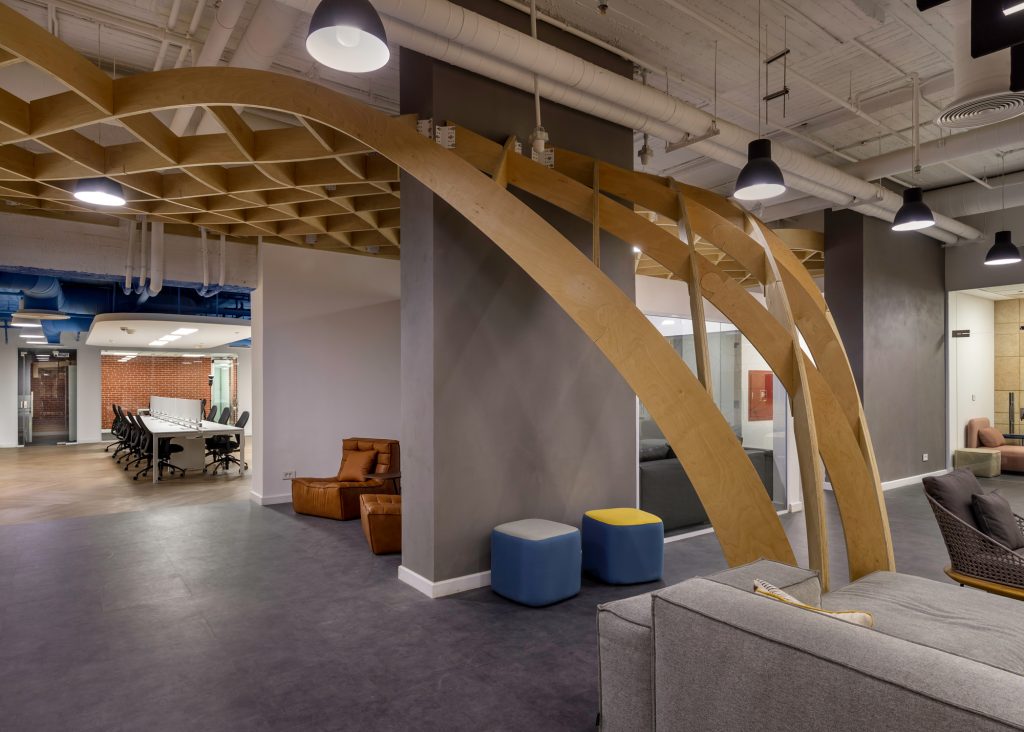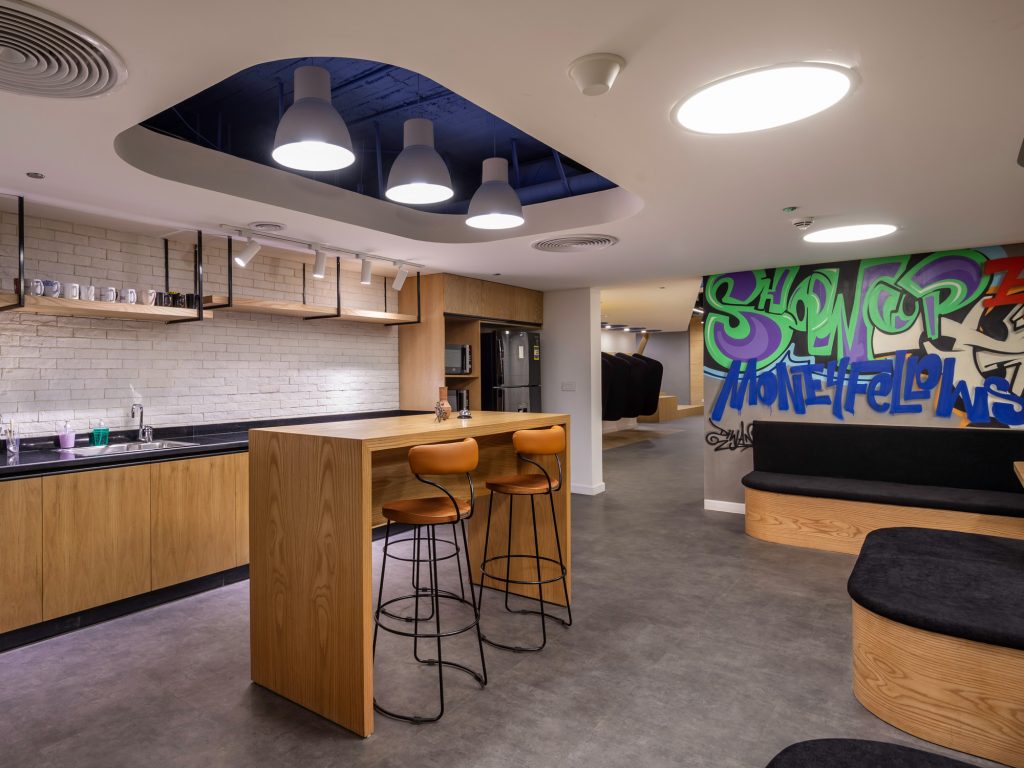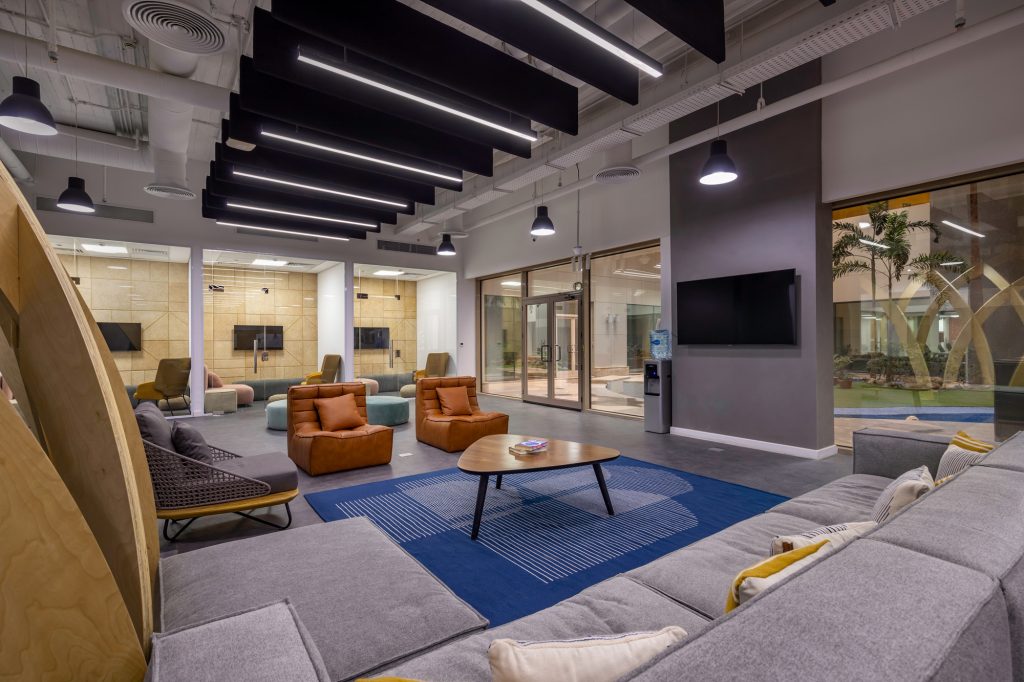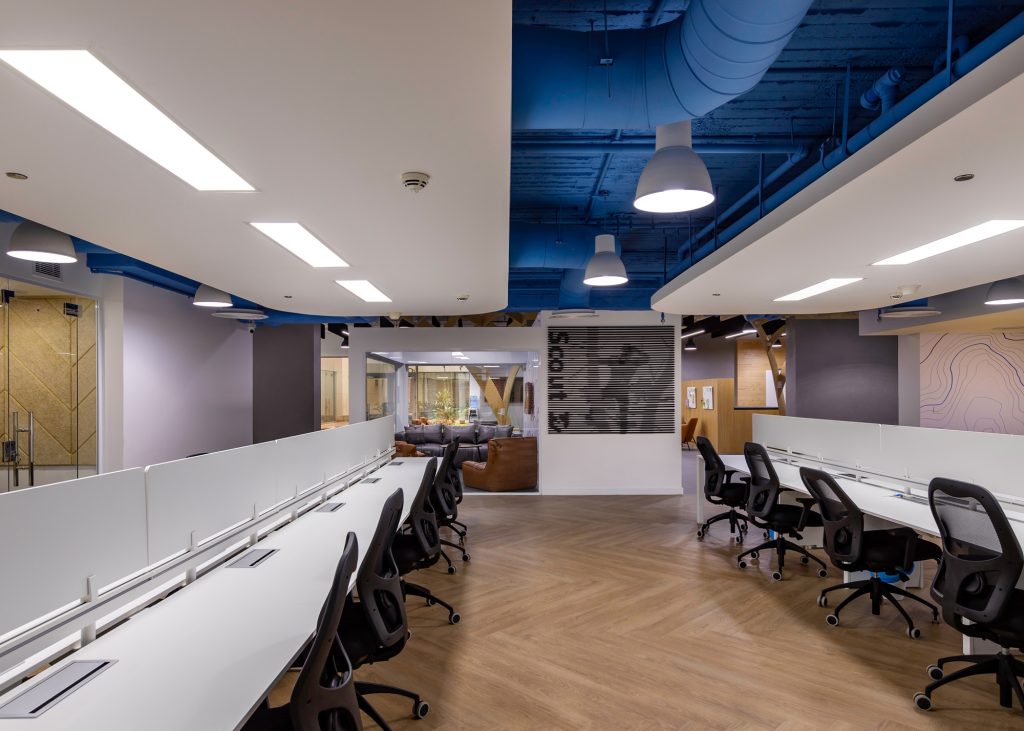
From Burned Out to Balanced: Designing Workplaces for Well-Being and Productivity
Feeling stressed, overwhelmed, and burned out seems to have become an all-too-common...

Chances that there are disengaged employees at your organization. This is real pain facing C-suite and HR executives around the globe. Gallup estimates that around 60% of employees feel disengaged from their work. Studies show that employee engagement is associated with quality of work, levels of productivity, and employee retention, which affects the overall performance of an organization. As such, boosting employee engagement and satisfaction levels became a strategic objective for leaders and managers world wide.
Then, how to make your employees more engaged at the workplace becomes the question. You may have probably heard about some recommendations such as paint the walls, add some perks and amenities, then your employees would become happy and satisfied. This ad-hoc fitting out of the workplace is not a foregone solution. To understand why this is the case, and what to do, we first need to establish an understanding of the factors affecting employee satisfaction and how workplace design could be strategically used.
The body of research on organizational change shows that employee satisfaction is multi-faceted. It is affected by organizing arrangements, social factors, technology and physical settings of the work environment.
Zooming in into the role of the workplace in specific, it is important to understand the change in the role of the office. It shifted from just a physical space that hosts employees to do their jobs to a place that defines the personality of the organization and provides a creative and comfortable environment for employees away from their home. Moreover, it gives them a reason to come to work. Thus, the space attends not only to the physical needs. It also expands to nurture the psychological and social needs of your employees.
Based on our research and practice, our top 4 strategies to design a workplace that contributes to boosting levels of employee engagement are to:
To get a better understanding of these strategies, let’s see them in action. Before diving deep into each strategy and its design manifestation, it is important to note that these strategies are like guiding principles, how they are implemented would differ according to the specific conditions and culture of each organization.
MoneyFellows is a booming Fintech company. They have an “unlimited paid time off” policy, which means employees are not obliged to work from the office. Before relocating to the new workplace, the management conducted a survey to measure employee engagement. The highest detractor was the workplace; with only 15-20% of employees regularly coming to the office. The management has put the objective of boosting employee engagement on the top of its priorities. With such clear intent, Adze Designs team crafted MoneyFellows workplace. Since the relocation, results of the post occupancy surveys show a higher level of employee satisfaction. Employees report that they feel more engaged with the new workplace and aligned with the organizational culture. According to their feedback, the new workplace provides them with more opportunities to interact and collaborate. In fact, the workplace became a major attraction with around 60-70% of employees coming to the office on a regular basis. The rate of turnover dropped from around 34% to around 15% as per January 2022 results, which means an increase in retention rates. It was also interesting to notice that the new workplace has had a wider impact on attracting new talents, for whom it is easier to get on board at the new workplace.
A growing body of literature and research shows that giving employees the power of choice and autonomy over when and where they work boosts the levels of engagement and satisfaction. Thus, an engaging workplace offers employees access to work settings that address their multiple needs during the day. This includes spaces for personal focus work, collaborative activities, relaxation and informal social interaction.

At MoneyFellows, we opted for an ‘Activity Based Workplace’ layout with a wide variety of work settings. This includes a mix of quiet and open workspaces, small meeting rooms, a huddle room in addition to a large work lounge and cafeteria zone.
As recent surveys show, many employees have become accustomed to working from home. Coming back to office may not be the first choice for many employees, given the freedom to choose where to work from, as highlighted in a recent Leesman report. Nevertheless, as discussed above, the role of the office has shifted towards building and strengthening connections among employees. Therefore, an attractive workplace provides employees with social spaces to interact with their colleagues whether these are planned or more serendipitous interactions.

At MoneyFellows workplace, we designed a number of social spaces to foster different modes of social interaction. This includes the work lounge, the huddle room, and the cafeteria zone.
We spend around 90% of our day indoors, most of this time at work. A plethora of studies document the considerable impact of buildings on human health and wellbeing. Thus, it comes with no surprise that the physical setting is one of the factors contributing to employee satisfaction. Our perception of the physical setting and well-being is shaped by a number of aspects including thermal comfort, visual comfort, physical comfort and sound levels in the space, as outlined in WELL building standards. A thermally comfortable workplace considers ventilation, temperature and other air parameters to reduce health symptoms associated with sick building syndrome. A visually comfortable workplace offers opportunities to get balanced exposure to electric light as well as natural light during the day. A physically comfortable workplace hosts workspaces with a variety of positions and encourages movement throughout the day. Furthermore, incorporating plants, natural material, artwork and other elements of biophilic design also contributes to reducing mental fatigue and increasing job satisfaction.

At MoneyFellows workplace, natural light was taken into consideration when designing the different zones. Due to its position in the office building, MoneyFellows workplace has only one exterior wall looking over the building atrium. Therefore, the main work lounge which is regularly occupied by unassigned seatings is placed adjacent to the vertical glazing area.
At the space level, adopting an ‘Activity Based Workplace’ approach enables the employees to physically move around during the day and change postures. At the human level, pieces of furniture were selected to support working at a wide variety of postures. It is also worth mentioning that HR management are keen to nudge the employees to move around the workplace.
As the role of the workplace is changing, it is becoming more important than ever to make the values of culture of your organization visible. This makes the workplace act as a corporate memory and reinforces the core values among employees. When the values of companies are clearly manifested in the workplace, employees are more likely to display higher levels of job satisfaction and increase retention rates, as reported by the British Council for offices. A successful design incorporates a distinctive combination of forms, material, colors and experiential graphic elements to create a rich sensory experience that uniquely communicates the organizational values and culture.

Together with the MoneyFellows team, we worked to distill their core values. They are a team of leaders who live their ideals, embrace change, and seek the next peak. These values were then intuitively translated into space. As such, a parametric shell made of interlaced wood membranes extends across the space. A street artwork inspired by the company’s core values is on the cafeteria walls. A parametric artwork is installed in the main workspace to represent the ‘Scout Mindset,’ a key value for the organization.
Read more about MoneyFellows new workplace on Office Snapshots
Employee engagement is a multivariable equation, with many variables. The workplace design is one of the variables that could have an impact. Next time, when you consider office-fit out or relocation, consider this as a strategic move to increase employee engagement, rather than an incurred cost. To do that, remember that the design needs to provide choice, foster social interaction, promote health and well-being and; express your organizational values.